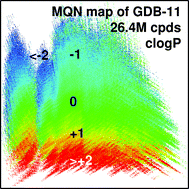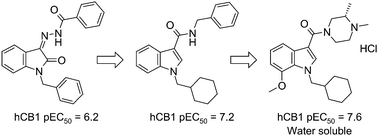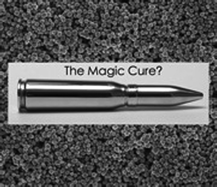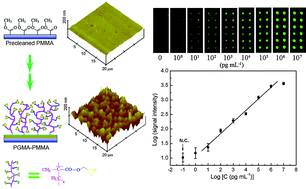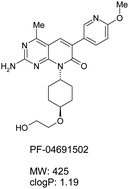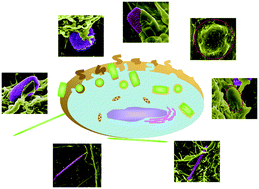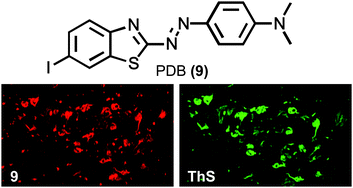This month sees the following articles in MedChemComm that are in the top ten most accessed:-
Molecular obesity, potency and other addictions in drug discovery
Michael M. Hann
Med. Chem. Commun., 2011, Advance Article, DOI: 10.1039/C1MD00017A, Review
Aromatic chloride to nitrile transformation: medicinal and synthetic chemistry
Lyn H. Jones, Nicholas W. Summerhill, Nigel A. Swain and James E. Mills
Med. Chem. Commun., 2010, 1, 309-318, DOI: 10.1039/C0MD00135J
Identification of target family directed bioisosteric replacements
Anne Mai Wassermann and Jürgen Bajorath
Med. Chem. Commun., 2011, Advance Article, DOI: 10.1039/C1MD00066G
The p53-MDM2/MDMX axis – A chemotype perspective
Kareem Khoury, Grzegorz M. Popowicz, Tad A. Holak and Alexander Dömling
Med. Chem. Commun., 2011, 2, 246-260, DOI: 10.1039/C0MD00248H, Review
Platinum-oxazoline complexes as anti-cancer agents: syntheses, characterisation and initial biological studies
Paras N. Yadav, Ramsay E. Beveridge, Jonathan Blay, Alaina R. Boyd, Maja W. Chojnacka, Andreas Decken, Ankur A. Deshpande, Michael G. Gardiner, Trevor W. Hambley, Michael J. Hughes, Leslie Jolly, Jacquelyn A. Lavangie, Timothy D. MacInnis, Sherri A. McFarland, Elizabeth J. New and Robert A. Gossage
Med. Chem. Commun., 2011, 2, 274-277, DOI: 10.1039/C0MD00211A
Natural products targeting telomere maintenance
Jack Li-Yang Chen, Jonathan Sperry, Nancy Y. Ip and Margaret A. Brimble
Med. Chem. Commun., 2011, 2, 229-245, DOI: 10.1039/C0MD00241K
(Carboxydiamine)Pt(ii) complexes of a combretastatin A-4 analogous chalcone: the influence of the diamine ligand on DNA binding and anticancer effects
Miroslava Zoldakova, Bernhard Biersack, Hana Kostrhunova, Aamir Ahmad, Subhash Padhye, Fazlul H. Sarkar, Rainer Schobert and Viktor Brabec
Med. Chem. Commun., 2011, Advance Article, DOI: 10.1039/C1MD00042J
Synthesis and biological evaluation of tetrazole containing compounds as possible anticancer agents
Chebolu Naga Sesha Sai Pavan Kumar, Dusmant Kumar Parida, Amlipur Santhoshi, Anil Kumar Kota, Balasubramanian Sridhar and Vaidya Jayathirtha Rao
Med. Chem. Commun., 2011, Advance Article, DOI: 10.1039/C0MD00263A
Synthesis and efficient siRNA delivery of polyamine-conjugated cationic nucleoside lipids
Sachin Prakash Patil, Jeong Wu Yi, Eun-Kyoung Bang, Eun Mi Jeon and Byeang Hyean Kim
Med. Chem. Commun., 2011, Advance Article, DOI: 10.1039/C1MD00014D
N-(5-substituted thiazol-2-yl)-2-aryl-3-(tetrahydro-2H-pyran-4-yl) propanamides as glucokinase activators
Zhiqing Liu, Qingzhang Zhu, Fuying Li, Lina Zhang, Ying Leng and Ao Zhang
Med. Chem. Commun., 2011, Advance Article, DOI: 10.1039/C1MD00002K
Why not take a look at the articles today and blog your thoughts and comments below.
Fancy submitting an article to MedChemComm? Then why not submit to us today or alternatively email us your suggestions.
 In this HOT paper David S. Millan and colleagues at Pfizer R&D explore the influence of intramolecular hydrogen bonding on the membrane permeability and bioavailability of some of these drugs. By determining the propensity of molecules to form intramolecular hydrogen bonds they are able to revise previous assumptions about where certain molecules sit in chemical space. They find that when hydrogen bonding is taken into account these drugs sit much closer to rule of five space – thereby explaining the successful absorption of drugs that otherwise violate rule of five principles.
In this HOT paper David S. Millan and colleagues at Pfizer R&D explore the influence of intramolecular hydrogen bonding on the membrane permeability and bioavailability of some of these drugs. By determining the propensity of molecules to form intramolecular hydrogen bonds they are able to revise previous assumptions about where certain molecules sit in chemical space. They find that when hydrogen bonding is taken into account these drugs sit much closer to rule of five space – thereby explaining the successful absorption of drugs that otherwise violate rule of five principles.










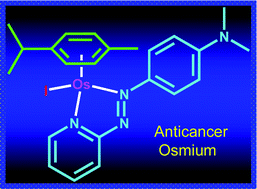 The majority of therapeutics clinically available for cancer treatment are platinum-based and work via a DNA alkylation mechanism that leads to cell apoptosis. But a number of cancers are resistant to apoptosis and not treatable with platinum-based drugs.
The majority of therapeutics clinically available for cancer treatment are platinum-based and work via a DNA alkylation mechanism that leads to cell apoptosis. But a number of cancers are resistant to apoptosis and not treatable with platinum-based drugs.